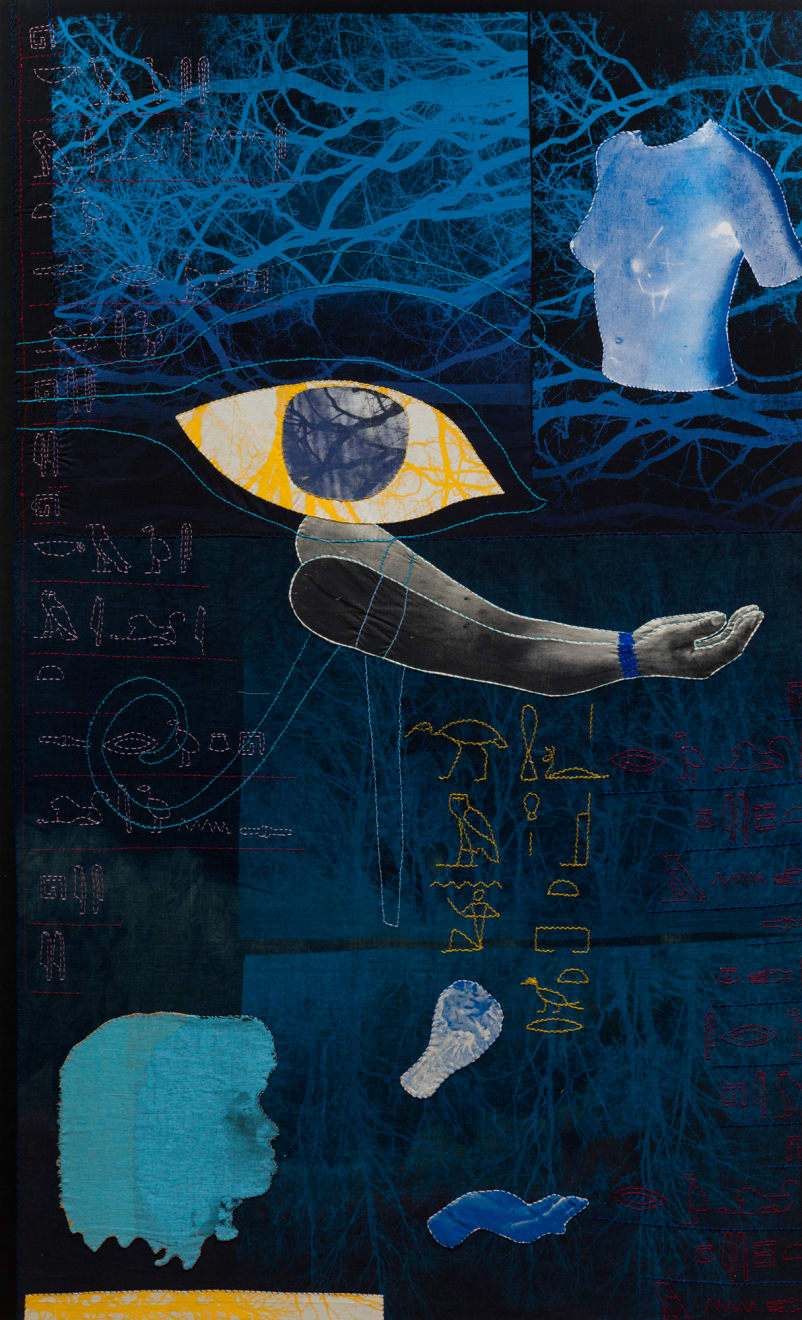Zohra Opoku
‘Horus is the one who rescues (and) who impedes. Horus is his father. Horus is (his) mother. Horus is this [brother]. Horus is this friend. Horus came from the seed of his father when he was decaying. He rules Egypt (and) the gods serve him. Nursing milli, 2021
Indigo dyed linen, Monotype print, Screenprint, thread
91 x 56 in
231.1 x 142.2 cm
231.1 x 142.2 cm
Copyright the Artist

